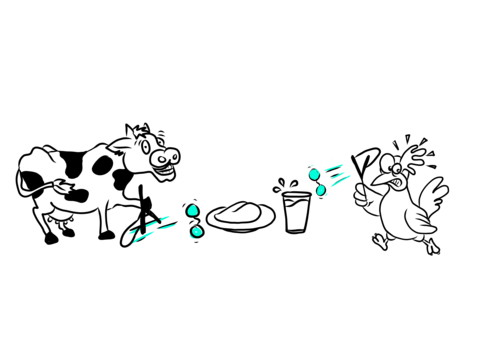
In weird but potentially practical news, NIST researchers headed to the grocery store to find out. Not as a joke, but as a step toward better imaging methods for medicine. Let us explain.
Quantum physics is famous for cool, spooky phenomena like teleportation — of data, that is, not people as in Star Trek. But can quantum physics be applied to biological entities?
In fact, yes. NIST researchers are applying nonclassical, quantum light to biological materials you might find in a grocery store.
The team recently built a special instrument to create pairs of photons, the smallest particles of light, that were entangled, with linked properties. With it, the researchers sent entangled photons through microscope slides containing skim and 2% milk and thin slices of chicken.
Most photon pairs were scattered or absorbed or otherwise lost, but those that survived the entire trip did so with their entanglement intact. Specifically, an average of about 1.6 photon pairs per second – about 1% of those that started the trip — made it through the thickest chicken sample still entangled.
It’s the first time this type of entanglement has been shown to traverse biological media. (Another type — polarization — has gone through brain tissue.)
The results support growing research efforts around the world — including here at NIST — using nonclassical light to boost the sensitivity, specificity and resolution of biological imaging and sensing. These new microscopy methods could help us better observe living cells and tissues for advances in regenerative medicine or the neurological study of memory and learning.
One step to get there was to the grocery store. We’ll see where the next step leads.
Learn more about work of NIST researchers Charles Camp, Marty Stevens, Thomas Gerrits and Ralph Jimenez in Biomedical Optics Express.
Follow us on social media for more like this from all across NIST!

